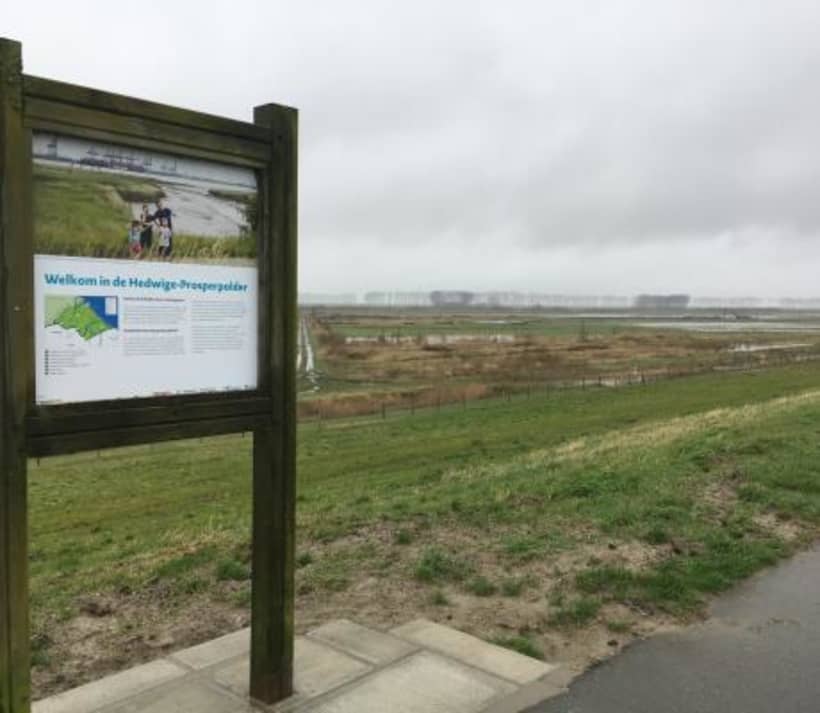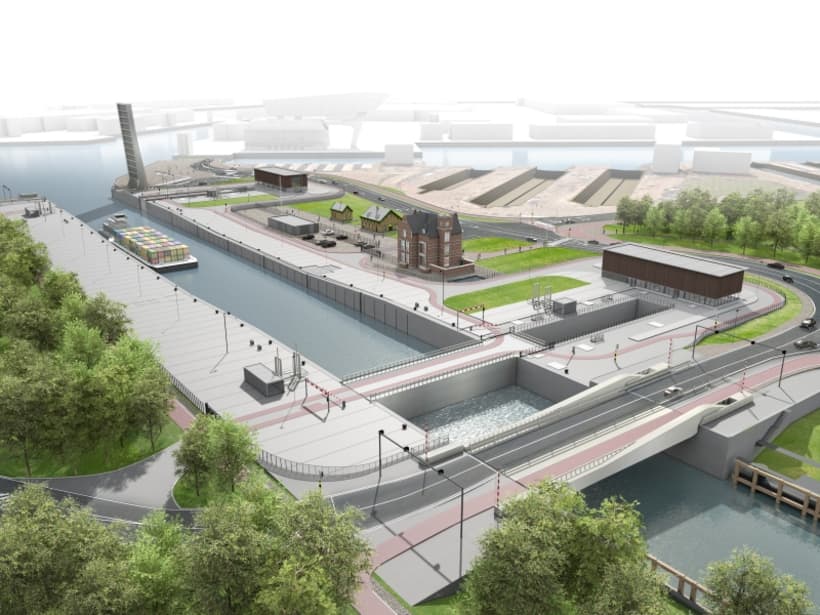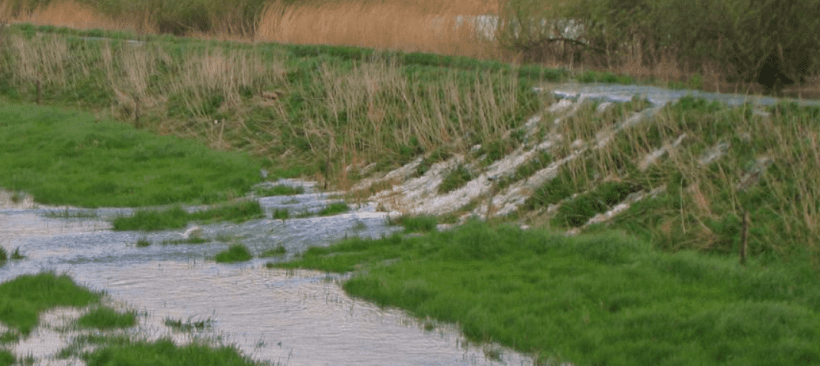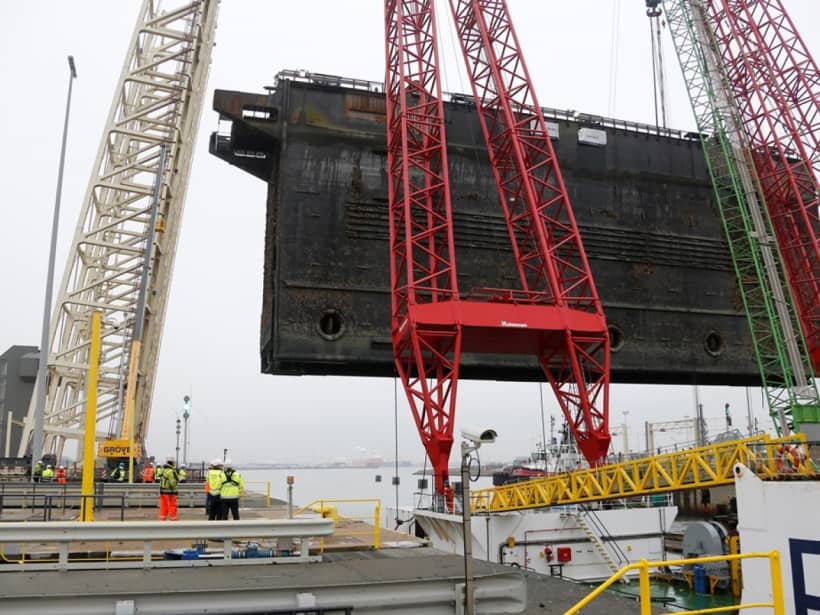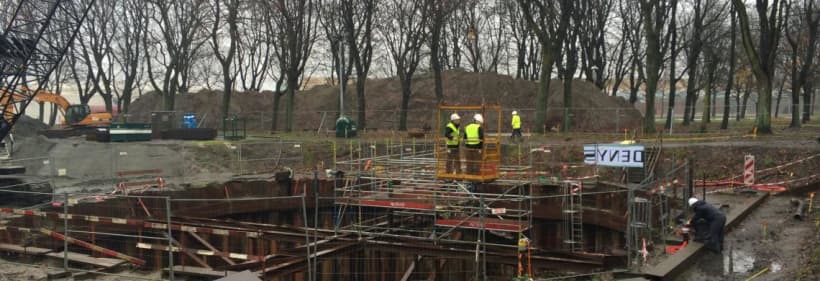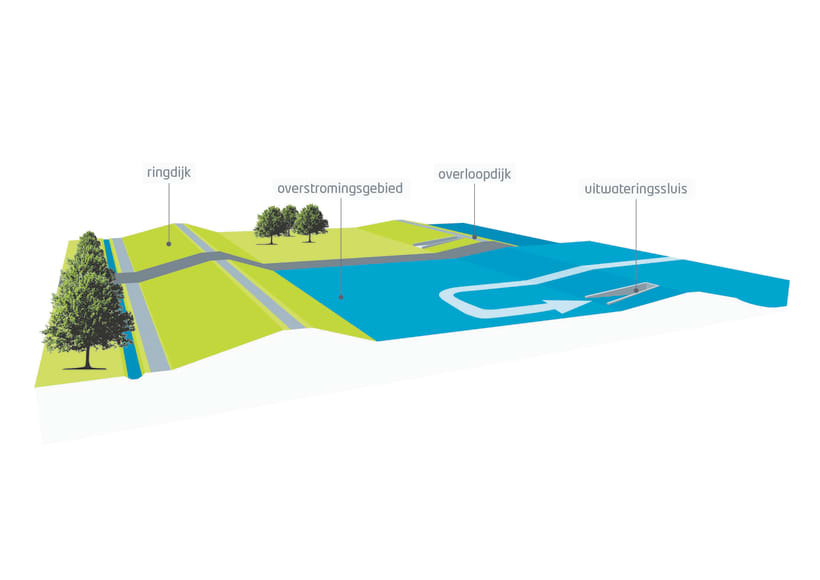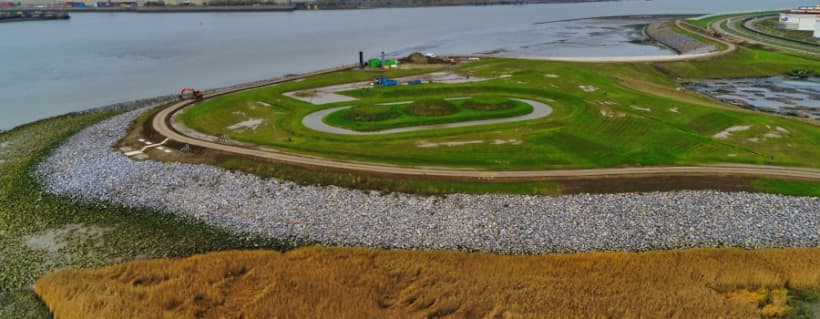On November 13th, 2017, construction began on the New Terneuzen Lock – a remarkable undertaking that aims to create one of the world’s largest locks within an existing lock complex. This unique project is located near the city of Terneuzen in the Netherlands.
The task is made even more challenging due to the presence of the Boom Clay (a highly plastic clay) and glauconite-rich sands in the subsurface. These geological factors significantly influence the design and construction of this expansive lock.
The New Terneuzen Lock project is a collaborative effort led by the Flemish Dutch Scheldt Commission, which involves both Flemish and Dutch authorities working together. Their joint goal is to ensure the safety and sustainability of the Scheldt estuary. Drawing from past experiences, such as the construction of the Kieldrecht lock in Antwerp and other locks overseen by the Dutch authority, Rijkswaterstaat, the teams are closely collaborating.
Anticipations are set for the inaugural passage of the first ship through the new lock in 2024, marking a significant milestone in this ambitious endeavor.
Additional Details About the Project (in Dutch)(opens in new window)
Article: ‘Transforming an Old Gully into a Modern Lock’ (in Dutch)(PDF file opens in new window)
In recent years, the dykes of the Hedwige-Prosperpolder have served as an outdoor laboratory for large-scale experiments. This was made possible due to plans for the area’s depoldering as part of the Sigmaplan. New dikes were constructed farther inland, creating an ideal opportunity to conduct experiments on the existing dikes before their removal.
Under the Polder 2C’s research project, various wave experiments were conducted. These aimed to determine the strength of grass covers on dikes and to investigate surface erosion development. Additionally, the impact of animal tunneling, caused by creatures like moles, mice, foxes, and badgers, on erosion was studied through mapping tunnel occurrences.
Innovative methods were applied to repair damaged dikes, allowing us to study the ease of repairing during stressful situations and their effectiveness against further erosion.
The division Geotechniek conducted geotechnical investigations on the dikes, involving probing, drilling, and laboratory experiments and was also responsible for monitoring (which included measuring groundwater levels and temperatures during piping experiments). The geotechnical surveying was done in cooperation with other partners within the project including Fugro, Cerema and Deltares.
Initial findings from the geophysical and geotechnical investigations have been published in the article titled “First results of geophysical and geotechnical investigations along the Hedwige- and Prosperpolder dykes.” More details about monitoring during the piping test can be found in the article “Monitoring a full-scale backward erosion piping field test at Hedwigepolder.”
This research is part of the Polder2C-project, funded by the European Interreg 2 Seas programme and led by DMOW – Flanders Hydraulics and STOWA from the Netherlands.
For additional project information, visit: Sigmaplan - Project Hedwige Prosperpolder (in Dutch)(opens in new window).
The division Geotechniek played a significant role in the construction of the Kieldrecht Lock in the Port of Antwerp. In the design phase, our involvement included an extensive survey program conducted both in situ on the field and in the laboratory. The results from these efforts formed the basis for numerous geotechnical design calculations including considerations for the dikes and stability calculations for the lock.
Throughout the construction phase, we carried out geotechnical monitoring on-site to closely track the swelling of the Boom Clay, a type of highly plastic clay. This proved to be a great challenge.
Additionally, our responsibilities extended to conducting control calculations for the construction site itself and on the maximum allowable heights of the construction material mounts.
In 2018 the construction works for the tunnel in the Siesegemlaan was finished. The tunnel is built under the intersection of the Gentsesteenweg and de Siesegemlaan for transit traffic. GEO was involved in the geotechnical investigation and the choice of the construction method for the tunnel. During the construction works several parameters were monitored, such as deformations and strains in the diaphragm wall and the waterlevel in the vicinity of the tunnel.
The thorough renovation of the Royers Lock in Antwerp is ongoing. The lock will be completely renovated, resulting in important increase of length and width of the lock. GEO was responsible for the coordination and execution of the geotechnical investigation. We also contributed to the drawing up of the dossier, with plans and specifications. During the execution of the renovation works, we give geotechnical support and monitor the behavior of the soil and the lock.
Within the dikes knowledge group the Geotechnics Division, in cooperation with the Hydraulics Laboratory, is working on the professionalization of dike management in Flanders.
The failure behaviour of the dikes is further explored and innovative dike monitoring techniques are tested. Together with the dike managers agreements are concluded concerning the structuring and management of all relevant dike data, etc.
Furthermore, dike meeting days are organized at which the latest state of current research topics are explained to the different dike managers.The doors and the gate chambers of the Vandamme lock in Zeebrugge are due for full servicing after 30 years. The draining of the gate chambers is monitored with different monitoring techniques. Here both the movement of the lock and the influence of the lowering of the water table on the environment are closely observed.
An extensive test campaign is currently ongoing for the construction of the Oosterweelverbinding in Antwerp. Together with BAM, the company Denys and BBRI, our division is examining the characteristics of the soil to a great depth. Vibration and piling-driving testing have already been completed. The monitoring of a test excavation to 25 metres depth is nearly finished. The results will be reported after a thorough analyses.
The Sigmaplan is an initiative by Flemish government to safeguard against potential river flooding from the Scheldt. The plan encompasses the construction of taller and more resilient dikes, also known as levees, alongside designated flood areas that give the river more space while shielding the adjacent land from flooding.
The division Geotechniek carries out geotechnical surveys (probing, drilling and laboratory testing) on the locations where the dikes need to be raised and reinforced. Using the survey results the subsurface layers can be visualised and geotechnical characteristics identified. Also stability calculations for the dikes is part of our tasks.
Learn more on the Sigmaplan’s website (in Dutch)(opens in new window).
In the context of the Antwerp Masterplan, the historic quay walls in Antwerp must be stabilized. In order to draw up the geotechnical dossier, all available geological and geotechnical data were collected. Use was also made of the Subsoil Database Flanders Service (DOV) (in Dutch)(opens in new window). Based on the archived data, a comprehensive program was prepared for in situ tests, laboratory testing and monitoring in the field. Analysis of the obtained data was used to establish and characterize the ground layer structure. The extensive research resulted in an economic design of the stabilization method.

